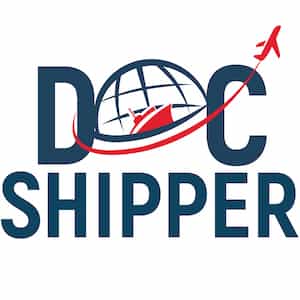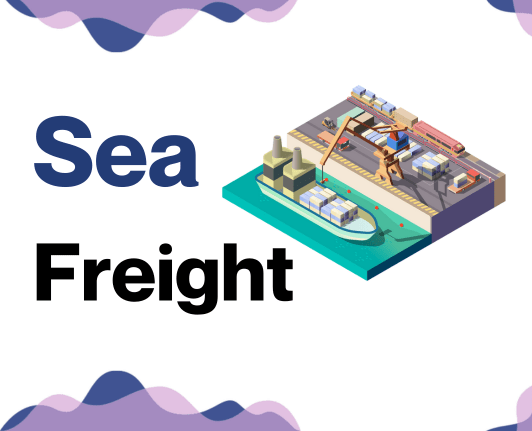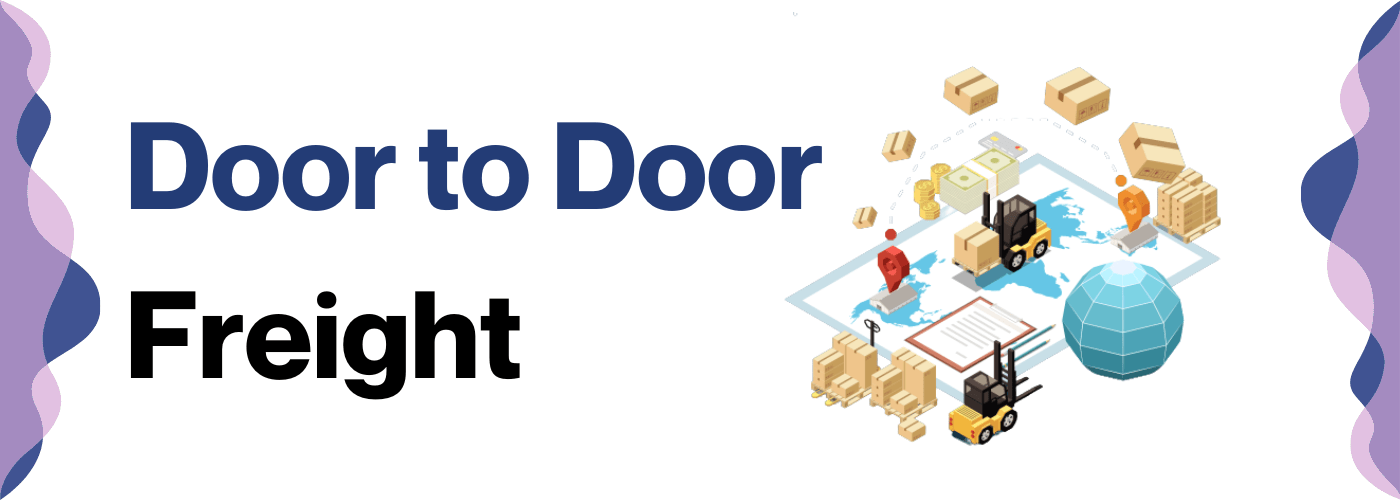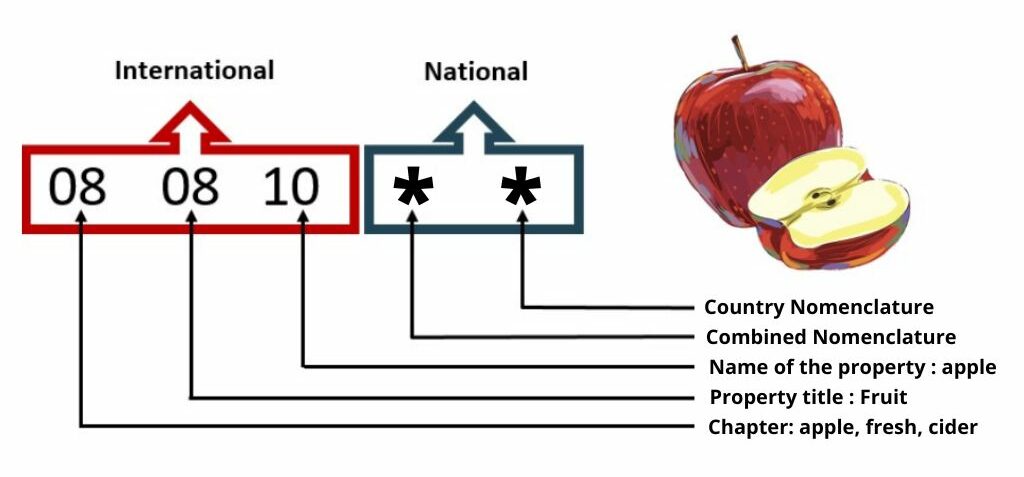Ever tried figuring out a Rubik's cube in the dark? Shipping goods between Malaysia and Czechia can feel a lot like that, with complex factors like understanding rates, transit times, and customs regulations. This comprehensive guide aims to be your source of light in the metaphorical sense, helping businesses to decode the complex pattern of international freight forwarding.
Here, you will find detailed descriptions of different freight options – sea, air, road, and rail – complete with expected transit times, costs, and explanations of necessary regulations. Further sections will delve into the labyrinth of customs clearance, discussing duties, taxes, and practical advice on how to navigate these processes with ease.
If the process still feels overwhelming, let DocShipper handle it for you! As seasoned players in the international freight forwarding sector, their expertise turns the multifaceted challenges of shipping across borders into resounding business success stories.
Table of Contents
Which are the different modes of transportation between Malaysia and Czechia?
Choosing the optimal transport method between Malaysia and Czechia can have a big impact on your business. Sea and air freight are your main options, given the 10,000 kilometers dividing these nations. Think about this distance like a series of marathon races – it's a long haul! Water could be your slow but affordable tortoise, while air is your speedy but costly hare. Every business has unique needs, so pick your race wisely! Even the smallest considerations can make the difference between a logistical victory lap or a struggle to the finish line.
DocShipper Tip: Sea freight might be the best solution for you if:
- You're dealing with hefty quantities or oversized goods. Sea transport is your go-to for maximizing space without stretching your budget.
- Time sensitivity isn't a concern for your shipment. Ocean freight is known for its leisurely pace, especially when compared to the speed of air or rail.
- Your supply chain connects key international harbors. This positions you to take full advantage of a wide-reaching network of ocean trade routes.
Sea freight between Malaysia and Czechia
Ocean shipping from Malaysia to Czechia opens avenues to a thriving trade relationship, connecting major industrial centers via bustling cargo ports like Port Klang and Port of Prague. With sea freight offering a cost-effective solution for high-volume goods, despite its slower pace, it's no surprise businesses are setting sail on this route. But let's face it, the voyage isn't always smooth. The process can often feel like assembling a jigsaw puzzle, where any missing piece can disrupt the entire picture. Unforeseen challenges such as customs regulations, paperwork mishaps, and other logistical hurdles often leave shippers feeling like they're navigating a maze rather than a shipping route. Don't worry, we're here to hand you the roadmap. Smoothing out these shipping speed bumps, this guide will dive into the mistakes shippers often make, key best practices, and important specifications. Think of it as your personal GPS leading the way to a more efficient and effective shipping journey.
Main shipping ports in Malaysia
Port Klang
Location and Volume: Port Klang, positioned strategically in Selangor, on the western coast of Peninsular Malaysia, is the leading port of the country. It exhibits an impressive shipping volume in excess of 13 million TEU annually, reinforcing its crucial role in global trade.
Key Trading Partners and Strategic Importance: This port primarily trades with countries including China, Singapore, Indonesia, and the United States. Its strategic importance extends to its status as the world's 11th busiest port, serving as a significant component in the international supply chain.
Context for Businesses: If your business is targeting markets within the Asia-Pacific region, utilizing Port Klang could be greatly beneficial. Its vast capacity and access to key Asian markets offer an advantageous proposition to elevate your shipping strategy.
Penang Port
Location and Volume: Located on the northwestern coast of Peninsular Malaysia, Penang Port stands as a significant point of trade. With a shipping volume of more than 1.5 million TEU, it's one of the most active ports in the country.
Key Trading Partners and Strategic Importance: Key trading partners include China, India, Singapore, and Japan. What sets Penang Port apart is its comprehensive logistics hub capabilities, including container handling and free commercial zones.
Context for Businesses: Penang Port could be your gateway to vibrant markets in China and Southeast Asia. Its impressive service variety, strategic location, and dedication to operational efficiency could be a key part of your logistics chain.
Johor Port
Location and Volume: Nestled in the southern part of Peninsular Malaysia in the state of Johor, Johor Port is a multipurpose port with a yearly shipping volume of around 1 million TEU.
Key Trading Partners and Strategic Importance: It has extensive trade relations with countries such as Singapore, China, India, and Indonesia. Johor Port holds a significant role as a regional logistics hub, providing a comprehensive range of port services.
Context for Businesses: If your shipping strategy includes the Southern Malaysia region or Singapore, Johor Port might play a vital role owing to its proximity and robust infrastructure.
Port of Tanjung Pelepas (PTP)
Location and Volume: Located at the confluence of the main east-west shipping lanes, in the state of Johor, PTP handles a substantial shipping volume of over 7 million TEU, making it the second busiest port in Malaysia.
Key Trading Partners and Strategic Importance: PTP trades mainly with China, Europe, the United States, and the Middle East. The port is renowned for its technologically advanced terminal operations.
Context for Businesses: For businesses aiming for a quick turnaround and technologically advanced logistics capabilities, employing PTP would be advantageous. Its strong connectivity makes it efficient for cargo destined for or shipped from the Middle East and the U.S.
Bintulu Port
Location and Volume: Situated in the state of Sarawak on Borneo, Bintulu Port serves as the chief export gateway for Sarawak. It handles a significant volume of bulk shipments.
Key Trading Partners and Strategic Importance: Bintulu Port has strong trading links with countries such as Japan, China, Australia, and Taiwan. It plays a strategic role in exporting valuable commodities including liquefied natural gas (LNG), petroleum products, and timber.
Context for Businesses: Businesses involved in bulk cargo and looking to tap into major commodity-oriented markets might find Bintulu Port a cornerstone of their shipping strategy due to its specialized handling of bulk and breakbulk cargo.
Kuantan Port
Location and Volume: In the east coast of Peninsular Malaysia, Kuantan Port pride itself on being a major multipurpose port with a predominant trade in bulk and liquid cargo.
Key Trading Partners and Strategic Importance: Active trade occurs with China, India, Indonesia, and Singapore. Its upcoming deepwater terminal will enhance its strategic importance significantly once operational.
Context for Businesses: If your enterprise regularly ships dry or liquid bulk, Kuantan Port's facilities can cater to your needs effectively. Its upcoming deepwater capabilities will further open new shipping avenues, enhancing your logistics chain.
Main shipping ports in Czechia
Port of Prague:
Location and Volume: Located in the heart of Czechia's capital city, the Port of Prague, this port is of principal significance for internal trade and transshipment operations. It handles a shipping volume that makes it one of the busiest in the landlocked country.
Key Trading Partners and Strategic Importance: Serving as a cornerstone for the local and regional economy, the port has strong ties with its key trading partners in Germany, Slovakia, Poland and Austria. This port's strategic importance is underscored by its ideal location that facilitates broad access to central and eastern European markets.
Context for Businesses: If you're looking to tap into the European market and value speedy transit, the Port of Prague's advanced rail, road, and river connections can expedite your logistics.
Port of Decin:
Location and Volume: Positioned in the north of Czechia, near the German border, the Port of Decin is a hub for transshipping goods to prominent industrial regions. It caters to a substantial volume of shipments, handling an array of cargo types.
Key Trading Partners and Strategic Importance: With Germany as its key trading partner, Port of Decin's location offers strategic access to major European trade corridors, making it an important node for its substantial traffic. The port holds a unique position due to its connection to Elbe's navigable waterway.
Context for Businesses: If your goal is to bridge your operations between Czechia and Germany or other Northern European countries, the Port of Decin could greatly streamlines your supply chain.
Note: Czechia is a landlocked country, its 'ports' are in fact river ports that play significant roles in transshipment operations while not representing traditional seaports as found in coastal nations.
Should I choose FCL or LCL when shipping between Malaysia and Czechia?
Deciding how to ship between Malaysia and Czechia - by Full Container Load (FCL) or Less than Container Load (LCL) - is like picking the right tool for the job. This strategic decision could make or break your shipping success, affecting cost, time, and efficiency. But don't sweat it! We're here to make sense of these two sea freight options so you can strike the perfect balance for your specific needs. Let's dive into the nitty-gritty and help you make an informed choice. Stay tuned!
LCL: Less than Container Load
Definition: LCL (Less than Container Load) shipping means that your cargo shares space in a container with other goods. Unlike a Full Container Load (FCL), in which you pay for a whole container, with LCL, you only pay for the volume your cargo occupies.
When to Use: LCL shipping is ideal when your cargo volume falls below 13/14/15 CBM (cubic meters). This option provides flexibility for those with low-volume shipping needs, making it a cost-effective alternative.
Example: Suppose you’re a car parts manufacturer in Malaysia shipping small quantities of automotive components to a distributor in Czechia. With LCL, you only pay for the space your parts occupy, potentially saving costs compared to booking a whole container.
Cost Implications: While the LCL rate per CBM may be higher than FCL, it often works out cheaper for low volume cargo. Note, there may be additional fees such as LCL handling charges on arrival, but these costs would still be less than paying for unused space in an FCL. Always request an LCL freight quote upfront to understand the full cost breakdown.
FCL: Full Container Load
Definition: FCL, or Full Container Load, is a type of shipment where a freight container, typically either a 20ft or 40ft container, is used exclusively for a single consignment, hence 'full'.
When to Use: FCL shipping is ideal when your cargo volume is more than 13-15 cubic meters (CBM). One significant advantage is cost efficiency for high volume shipments. By utilizing a full container, the cost per unit is generally lower. Also, as your goods are the container's only contents, safety is enhanced. The FCL container remains sealed from origin to destination, reducing potential risks of damage or loss.
Example: Consider Company A, having 16 CBM of machinery parts to transport from Malaysia to Czechia. An fcl shipping quote provides them with better value and guarantees added safety, making FCL shipping the preferred option.
Cost Implications: Though the up-front cost for an FCL container might seem higher, remember it’s cheap for high volume. Large shipments end up having a lower cost per unit, and this, combined with increased safety, makes FCL a smart choice for substantial logistics needs.
Unlock hassle-free shipping
Confused about shipping consolidation or a full container from Malaysia to Czechia? DocShipper is here to help! Our experienced experts will guide you in finding the best, cost-effective shipping option. We consider various factors, such as cargo size, urgency, and budget while mapping out the best plan for your business. Let's simplify your shipping needs. Connect with us for a free estimation, and experience the most straightforward, hassle-free shipping solutions today!
How long does sea freight take between Malaysia and Czechia?
The average shipping time for sea freight between Malaysia and Czechia typically ranges from 30 to 35 days. However, remember these are only averages and actual transit times can vary based on several factors, including the specific ports used, the weight, and the particular nature of the goods being transported. For a more detailed and accurate shipping estimate, it's advised to consult a professional freight forwarder like DocShipper who can tailor a shipping quote based on your unique requirements.
Let's take a look at some average transit times from various ports:
| Malaysia Ports | Czechia Ports | Average Transit Time (Days) |
| Port Klang | Port of Prague | 32 |
| Johor Port | Port of Decin | 43 |
| Tanjung Pelepas | Port of Prague | 32 |
*Please note these times are estimates and may vary. Always discuss with your freight forwarder for precise timings.
How much does it cost to ship a container between Malaysia and Czechia?
Determining exact ocean freight rates between Malaysia and Czechia is a bit tricky, akin to pinning a wave to the sand! While a broad cost per CBM would be between $50 and $200, numerous variables come into play. From the loading point, destination point, to the shipping carrier and the type of goods being shipped, every detail impacts the final cost. Stir in monthly market fluctuations and suddenly you're navigating an ever-changing sea of rates. But don't drop anchor just yet! Our seasoned shipping specialists are adept at securing the best shipping costs on your behalf. Through their expertise and your unique case-by-case details, we'll ride this wave together, securing a route that's cost-effective and efficient.
Special transportation services
Out of Gauge (OOG) Container
Definition: An OOG container is specially designed for cargo that exceeds standard container dimensions. These containers carry out of gauge cargo, items too large for traditional containers.
Suitable for: Large machinery, construction equipment, oversized industrial parts.
Examples: Think of turbines for a wind farm, a pre-assembled factory module, or a yacht.
Why it might be the best choice for you: If you're dealing with oversized items, an OOG container can navigate the logistics of shipping these massive goods, ensuring your delivery arrives safely to Czechia from Malaysia.
Break Bulk
Definition: Break bulk is a method where goods are loaded individually in a cargo hold rather than in a container. The term 'loose cargo load' is also applicable as the items are not enclosed in any kind of container.
Suitable for: Cargo of different shapes and sizes, that may not fit into traditional containers.
Examples: Large items such as beams, wood, paper rolls, construction equipment, or even vehicles can be shipped via break bulk.
Why it might be the best choice for you: If you're shipping diverse or unusually shaped cargo, break bulk could provide the flexibility you need.
Dry Bulk
Definition: Dry bulk refers to goods shipped in large quantities, stored directly in the hull of the vessel. These are unpackaged goods shipped in large amounts like a full shipload of grain.
Suitable for: Granular and solid materials, such as coal, grains, or minerals.
Examples: Materials such as barley for Czech beer production, or aggregate for construction projects are good candidates for dry bulk shipping.
Why it might be the best choice for you: If you're looking to send a large quantity of a single type of loose, dry material, dry bulk could be the most efficient and cost-effective method for you.
Roll-on/Roll-off (Ro-Ro)
Definition: Ro-ro is a method where vehicles and machinery are rolled on and off a ro-ro vessel. The term Roll-on/Roll-off stems from the fact that products are driven or towed on and off the ship.
Suitable for: Wheeled cargo and vehicles such as cars, trucks, trailers, and railroad cars.
Examples: Tractors for agriculture, buses for Czech transit companies, and even personal vehicles can be shipped via ro-ro.
Why it might be the best choice for you: If you have wheeled or large movable equipment, Ro-Ro shipping provides a convenient, reliable, and easy-to-track method.
Reefer Containers
Definition: Reefer containers, short for refrigerated containers, are used for goods which need to be transported at chilled or frozen temperatures.
Suitable for: Perishable goods like fruits, vegetables, seafood, and other foodstuffs or pharmaceuticals.
Examples: Exotic fruits from Malaysia, fresh fish for Czech markets, or temperature-sensitive medicines are all typical reefer cargo.
Why it might be the best choice for you: If you're in the food, pharmaceutical or any temperature-sensitive industry, a reefer container will maintain product integrity from port to port.
Shipping between Malaysia and Czechia? Look no further than DocShipper. Our expert team can guide you through your options and help select the best one for your needs. Reach out to us for a free shipping quote in less than 24h.
DocShipper Tip: Air freight might be the best solution for you if:
- You're pressed for time or facing a non-negotiable deadline. Air freight delivers unparalleled speed when it comes to transit times.
- Your shipment is modest in size, falling under 2 CBM. Air freight is particularly well-suited for these smaller consignments.
- Your supply chain includes destinations that are off the beaten maritime or rail paths. Air freight gives you access to a comprehensive global airport network.
Air freight between Malaysia and Czechia
Brace yourself as we soar into air freight between Malaysia and Czechia. This lightning-fast means of shipment is a champion in speed and reliability, making it ideal for your compact, high-value items. Imagine shipping electronics like smartphones - you need them delivered ASAP, right? Air freight excels there and can even be cost-effective for these smaller, precious cargo.
But hold your horses! Too many shippers hit turbulence due to avoidable errors. Think of it like baking a cake; missing one ingredient can ruin the whole dessert. Incorrectly calculating your shipment's weight? That's a recipe for inflated costs. In this guide, we're revealing common missteps and best practices to ensure you're not unknowingly digging into your profit. Gear up to discover a world where price estimation and shipping costs are as clear as a cloudless sky.
Air Cargo vs Express Air Freight: How should I ship?
When deciding how to ship your goods between Malaysia and Czechia, the choice between air cargo and express air freight is crucial. In simple terms, air cargo typically uses space in regular flights, while express air freight whisks your products off in their own dedicated plane. Which one wins the race for your business? Stay tuned as we delve into the details and help you make an informed decision.
Should I choose Air Cargo between Malaysia and Czechia?
Considering air cargo between Malaysia and Czechia? It could be a smart choice, especially if you're shipping over 100/150 kg (220/330 lbs) of goods. Renowned airlines such as Malaysia Airlines and Czech Airlines offer reliable and cost-effective cargo services. Despite their fixed schedules that may extend transit times, their consistent delivery and predictability could align well with your budgeting requirements. Hence, with air cargo, you'll be assured of your shipment's safe and timely arrival.
Should I choose Express Air Freight between Malaysia and Czechia?
Choosing Express Air Freight for shipping goods between Malaysia and Czechia could be a game-changer for your business, especially if your cargo is less than 1 cubic meter or weighs under 100/150 kg (220/330 lbs). This service utilises dedicated cargo planes, without passengers, ensuring rapid deliveries. World-renowned courier firms like FedEx, UPS and DHL specialize in Express Air Freight, promising reliable and speedy delivery. If speed is a top priority and your cargo fits these criteria, this may be an excellent option.
Main international airports in Malaysia
Kuala Lumpur International Airport
Cargo Volume: The Kuala Lumpur International Airport handles over 800,000 tons of cargo annually, with a capacity to handle up to 1.2 million tons.
Key Trading Partners: The major trade partners include China, Singapore, Japan, USA, and the European Union.
Strategic Importance: As Malaysia's main international airport, it offers extensive connectivity making it a viable hub for businesses.
Notable Features: It houses over 100 cargo airlines and has dedicated cargo and free zones facilitating logistics and distribution services.
For Your Business: Fast customs procedure and advanced logistics solutions make it easier for businesses to move goods quickly, enhancing your efficiency and timely delivery.
Penang International Airport
Cargo Volume: Penang International Airport handles approximately 360,000 tons of cargo each year.
Key Trading Partners: Major trading partners include China, Japan, USA, and the ASEAN countries.
Strategic Importance: It’s the third busiest airport in the country and serves as a crucial link to northern Malaysia’s industrial areas.
Notable Features: The airport houses several logistics providers and has a dedicated cargo complex.
For Your Business: If your business is focused on trading with northern Malaysia or the ASEAN countries, leveraging this airport could facilitate quicker customs processing and less transit time.
Sultan Abdul Aziz Shah Airport
Cargo Volume: Handling around 100,000 tons of cargo annually, it's not the largest but has strategic importance.
Key Trading Partners: Key partners include ASEAN countries, China, India and the Middle East.
Strategic Importance: Located in Subang, it is near the capital Kuala Lumpur, providing quick access to Malaysia's central business district.
Notable Features: Mostly accommodates domestic and regional flights with some cargo facilities.
For Your Business: Ideal for businesses operating domestically or with Asian partners, it provides convenient access to central Malaysia's business areas minimizing internal transport delays.
Kota Kinabalu International Airport
Cargo Volume: This airport handles about 25,000 tons of cargo annually.
Key Trading Partners: Key trading partners are mainly from Asia with a focus on China, Taiwan and South Korea.
Strategic Importance: It's Malaysia’s second busiest airport and serves as a gateway to the island of Borneo.
Notable Features: It’s the hub of several low-cost carriers that also handle freight.
For Your Business: If your market focus is primarily in the East Asian region, this airport provides an optimal connection for faster transportation and lower shipping costs.
Kuching International Airport
Cargo Volume: Approximately shipping 22,000 tons of cargo each year, it serves a niche market.
Key Trading Partners: The main partners include China, Indonesia, Singapore, and Australia.
Strategic Importance: It's a key gateway to Sarawak, one of Malaysia's largest states with massive industries.
Notable Features: It has a dedicated cargo and mail terminal.
For Your Business: Suppose you're involved in timber, oil, or other big industry in Sarawak. In that case, Kuching International Airport could offer a direct link to your manufacturing facilities, potentially saving time and money.
Main international airports in Czechia
Václav Havel Airport Prague
Cargo Volume: Handles approximately 81,000 tons of cargo annually.
Key Trading Partners: Most frequent goods delivered to Germany, China, and South Korea.
Strategic Importance: Serves as the main international airport in Czechia and the busiest airport in the newer EU member states.
Notable Features: Offers a Transfer Center for secured, uninterrupted transfer of import-export goods.
For Your Business: Václav Havel Airport might be your cargo partner considering its strategic position, direct cargo flights options, and warehousing facilities.
Brno - Tuřany Airport
Cargo Volume: Annually manages a cargo volume of around 1,000 tons.
Key Trading Partners: Primarily services goods flown from the UK, Turkey, and UAE.
Strategic Importance: Second busiest airport in Czechia, proving valuable for businesses attempting to bypass the logistical congestion in Prague.
Notable Features: Offers multiple cargo handling services including those for hazardous materials with fully equipped warehousing facilities.
For Your Business: If your business involves the shipment of special commodities, Brno - Tuřany may provide you with more tailored solutions.
Leoš Janáček Airport Ostrava
Cargo Volume: Handles over 8,000 tons of cargo annually.
Key Trading Partners: Major cargo transported to key European countries such as Germany and France.
Strategic Importance: Serves as an important transport hub for the industrial region of Moravia-Silesia.
Notable Features: Hosts a cargo terminal equipped for multiple types of goods, including perishables and valuables.
For Your Business: If your business requires regular shipments to the industrial hub of Moravia-Silesia, Leoš Janáček Airport could be a strategic choice.
Pardubice Airport
Cargo Volume: Deals with an annual freight of about 5,700 tons.
Key Trading Partners: Handles cargo primarily for Russia and China.
Strategic Importance: The location in East Bohemia allows fast access to Prague, Brno, and Poland.
Notable Features: The airport provides ample parking spaces and a strong ground handling system.
For Your Business: Locate Pardubice Airport on your shipping radar if your business frequently connects with Eastern countries; its strategic location might expedite your shipments.
Karlovy Vary Airport
Cargo Volume: Moves approximately 200 tons of cargo annually.
Key Trading Partners: Common trade partners are Germany, Slovakia, and Austria.
Strategic Importance: Situated close to the German border and the city of Prague, making it valuable for regional distribution.
Notable Features: Its river-set location allows for seamless multi-modal transportation opportunities – air, road, and river.
For Your Business: If your shipping strategy prefers multi-modal transportation, Karlovy Vary Airport could add value due to its unique geographic advantage.
How long does air freight take between Malaysia and Czechia?
On average, air freight shipping between Malaysia and Czechia takes approximately 3-6 days. However, this timeframe can fluctuate depending on various factors including the specific airports used, the weight of the shipment, and the nature of the goods being transported. A streamlined understanding of these parameters can help craft an efficient shipping strategy. For the most accurate transit times, do consult with an experienced freight forwarder like DocShipper.
How much does it cost to ship a parcel between Malaysia and Czechia with air freight?
Shipping air freight between Malaysia and Czechia generally averages from RM80 to RM130 per kilogram. However, it's challenging to provide an exact cost due to factors such as distance to and from the airports, parcel dimensions, weight, and goods nature. Rest assured, we tailor our quotes for every client, ensuring you get the most competitive rate without compromising service quality. Reach out to us today and receive your free, bespoke quote in less than 24 hours. We're committed to making your shipping experience smooth, reliable, and cost-effective.
What is the difference between volumetric and gross weight?
Gross weight refers to the actual physical heft of a shipment, while volumetric weight is a value derived from the overall size of a package irrespective of its heft. Simply, it's the 'space' your shipment occupies.
To calculate the gross weight in air cargo, we just weigh the shipment.
Say, for example, your package weighs 60 kg, which is approximately 132 lbs.
On the other hand, volumetric weight calculation involves a bit more math. Here's the formula it relies on: Length x Width x Height (in cm) / 5000. For express air freight often it is: Length x Width x Height (in cm) / 6000. Suppose your shipment is a box that measures 100 cm x 80 cm x 60 cm. The volumetric weight for air cargo would then be: 100 x 80 x 60 / 5000 = 96 kg (or about 211 lbs). For express air freight, the same package would weigh: 100 x 80 x 60 / 6000 = 80 kg (or about 176 lbs).
Understanding these terms is crucial as your freight charges are determined by whichever is higher—gross or volumetric weight. This ensures carriers account for both a shipment's heft and the space it occupies in the aircraft. By comprehending these calculations, businesses can better predict shipping costs and plan their logistics more effectively.
DocShipper tip: Door to Door might be the best solution for you if:
- You value convenience and want a seamless shipping process, as door-to-door takes care of every step from pickup to delivery.
- You prefer a single point of contact, as door-to-door services typically provide a dedicated agent to handle all aspects of the shipment.
- You want to minimize the handling of your goods, reducing the risk of damage or loss, as door-to-door minimizes transitions between different modes of transport.
Door to door between Malaysia and Czechia
International door-to-door shipping, aka the ultimate convenience in logistics, swings into action from Malaysia to Czechia. It's the whole package – they fetch your goods, see them through every clearance hurdle, and deliver right at your destination's doorstep. The upside? Absolute time-efficiency and no stress over red tape. So, strapped in? Let's dive into the nitty-gritty of door-to-door shipping between these two nations.
Overview – Door to Door
Adept at frosty complexities of shipping between Malaysia and Czechia? Door-to-door shipping service is your genie. A holistic solution, it handles everything - collection, customs, to final delivery. It's like an insurance against logistical nightmares, guaranteeing peace of mind. Sure, it isn't the cheapest, but the convenience and efficiency far outweigh the cost. It shines in scenarios where timeliness and a successful delivery are paramount. It's no surprise this is DocShipper’s most coveted service. Dive in to further grasp why door-to-door shipping might turn your gloomy logistics woes into a smooth ride.
Why should I use a Door to Door service between Malaysia and Czechia?
Ever caught a parcel playing hide-and-seek overseas? We bet it wasn't as fun as it sounds. That's where Door to Door service between Malaysia and Czechia comes in, playing the role of the logistics superhero you never knew you needed.
1. Stress-Busting Logistics: With complexities in freight forwarding, it can often feel like juggling a dozen flaming batons. Door to Door service handles everything, from pick-up in Malaysia to delivery in Czechia, leaving you free to focus on your business, not logistics.
2. Timely Workhorse: Worrying about deadlines? This service ensures timely pick-ups and deliveries to maintain your schedules. It's like having a logistics timekeeper at your disposal.
3. Complex Cargo's Best Friend: Got cargo that demands a bit of TLC? Specialized cargo handling ensures that even your most challenging freight receives the care it deserves, making the journey as smooth as a Bohemian glass.
4. Convenience is Key: The hassle of coordinating different transportation methods across countries can be as stressful as solving a Rubik's cube blindfolded. Door to Door service takes care of all trucking, whether it's in Kuala Lumpur or Prague.
5. Reach Every Corner: Worried about getting your shipment to its exact destination? Worry no more. This service ensures that even the most remote or complex locations in Czechia are reachable. It's like having a GPS for your cargo.
Choose Door to Door service, your logistics knight in shining armor who helps your business conquer international borders smoothly. After all, why juggle those flaming batons when you don’t have to?
DocShipper – Door to Door specialist between Malaysia and Czechia
Streamline your business with DocShipper's hassle-free, door-to-door shipping between Malaysia and Czechia. Equipped with vast experience and proficiency, we manage all aspects of your goods' transportation: packaging, transport logistics, customs procedures, overseeing all shipping methods. To free up your precious time and resources, a dedicated Account Executive is ready to serve you. Reach out for a free estimate in less than 24 hours or engage with our specialized consultants free of charge. Trust DocShipper, the logistics guru, to take care of your shipping needs, from A to Z.
Customs clearance in Czechia for goods imported from Malaysia
Customs clearance is a vital element in international shipping, often filled with complexities and unforeseen costs. Especially when importing to the Czech Republic from Malaysia, understanding customs duties, taxes, quotas, and licenses becomes crucial. In this intricate process, pitfalls like unexpected fees or your goods getting stalled at the border lurk around every corner. This guide will thoroughly demystify these aspects, making your shipping operation a breeze. Remember, DocShipper has your back through the entire process, globally and for all goods types. To generate an estimate, just reach out to us with your goods' origin, value, and HS Code. Let this guide steer you clear of any customs-cobblestones, ushering in smoother import operations from Malaysia to Czechia.
How to calculate duties & taxes when importing from Malaysia to Czechia?
Navigating the complex world of import duties and taxes can seem like a daunting task, but having an understanding of the key components is fundamental. Customs duties are calculated based on several aspects like country of origin, HS Code, Customs Value, the applicable Tariff Rate, and any additional taxes or fees associated with the product you're importing. In essence, it's about finding the sweet spot between what's being transported and where it's coming from. The first step in determining your customs duties when importing from Malaysia to Czechia is to specify the country where the goods were manufactured or produced. This serves as a bedrock for all your subsequent calculations to rest upon. Ultimately, the goal here is not to eliminate the complexity, but to give you the tools to navigate it effectively - like a compass guiding you through the intriguing seas of international trade.
Step 1 - Identify the Country of Origin
Knowing your product's country of origin matters - here's why. First, it sets in motion everything else, including HS Code determination. Second, customs duties vary based on relations between origin and destination countries. Third, it’s crucial to avoid legal issues - misidentifying could lead to hefty penalties. Fourth, some products may get preferential treatment based on trade agreements. Lastly, it aids in recognizing import restrictions.
You'll want to get familiar with the Malaysia-EU Free Trade Agreement. It can really save you money on customs duties! But, remember that import restrictions apply. For example, certain types of plants and products of animal origin demand specific permits. Choose the correct shipping option based on your product and restrictions, to avoid unnecessary complications. Now, take a step forward - get your product's HS Code. Trust us, an accurate country of origin makes for smooth sailing (or flying, or driving!) in international shipping.
Step 2 - Find the HS Code of your product
The Harmonized System (HS) Code, also known as the Harmonized Tariff Schedule code, is an international standard that classifies traded products. It's a unique six to ten-digit number assigned to specific goods, allowing customs authorities worldwide to identify products for the application of duties and taxes.
A common way to determine your product's HS Code is to ask your supplier, as they're typically acquainted with the regulations concerning what they're importing.
However, if that avenue isn't available, fret not - we are here to help guide you through an effortless process of locating the code. Visit the Harmonized Tariff Schedule and type your product's name into the search bar. As you browse the search results, you'll find the HS Code in the 'Heading/Subheading' column.
It's crucial to note the significance of accuracy when identifying your HS Code. Any errors or inaccuracies could result in customs delays and potential fine imposition upon your freight - an avoidable expense in your shipping process.
Here's an infographic showing you how to read an HS code.
Step 3 - Calculate the Customs Value
When shipping goods from Malaysia to Czechia, determining the customs value is integral to your freight forwarding journey. You might think the value of your goods solely dictates this, but there's a twist. The customs value equals the CIF value — the sum of the price of your goods, international shipping fees, and insurance costs. So, say you have products worth $5000, the shipping cost is $2000, and the insurance is $100, then your customs value is $7100, not just the $5000 of your cargo's worth. Understanding the interplay of these factors could save you from unexpected costs and streamline your freight forwarding operation.
Step 4 - Figure out the applicable Import Tariff
An import tariff is a tax imposed on goods imported into a country. As the Czech Republic is a member of the European Union, it adheres to the Common Customs Tariff (CCT) system.
To ascertain what import tariff applies to your goods, use the TARIC System - European Customs tool. You'll need the HS code of the product you've previously identified and the country of origin, in this case, Malaysia.
Let's consider an example. Assume you're importing a bicycle from Malaysia, which typically has an HS code 8712.00. The TARIC tool might provide you with an import tariff rate of 14%.
Next, calculate the import duties by adding your Cost, Insurance, and Freight (CIF). Let's say your CIF costs amount to $500. Your import duties would be 14% of $500, giving you a total of $70 in import duties.
Remember, understanding and correctly calculating tariff rates can drastically impact your shipment's cost, ensuring you avoid any unexpected costs upon delivery.
Step 5 - Consider other Import Duties and Taxes
In addition to the standard tariff duties on imports to Czechia from Malaysia, a few other taxes might apply and these can significantly affect your total shipping cost.
The first extra tax is an excise duty, applicable on certain goods like tobacco, alcohol, or fuel. It's crucial to verify if it applies to your product as these duties can often be high.
Another tax you may encounter is an anti-dumping tax. This duty is enforced when a product is sold at a much lower price in the destination country than in the producer country, essentially to protect local industries. For instance, if you're importing bicycles from Malaysia that are significantly cheaper than Czech-produced bicycles, an anti-dumping duty may apply.
Lastly, there's the VAT (Value Added Tax), applicable on the sum of the customs value, any duty payable and the cost of transport and insurance. The standard VAT rate in Czechia is 21% but it might differ depending on your product.
Please note, these are rough estimates and actual figures could vary. Always double-check with authorities or a qualified shipping agent to gain the most accurate information. Understanding these additional duties will help you evaluate your bottom-line shipping cost better and avoid any unexpected expenses.
Step 6 - Calculate the Customs Duties
Knowing how to correctly calculate customs duties is key to successful importation from Malaysia to Czechia. The customs value, or the total cost of your goods (including transport costs, insurance and handling fees), forms the basis for the calculation of duties.
Say, for example, you're importing electronics valued at $5,000 with no VAT, the customs duty in Czechia is 3%, so your customs duty will be $150.
If you're importing watches worth $10,000 with VAT at 21%, firstly calculate the customs duties (let's say it's 4%, so $400), then add that to the customs value and calculate VAT, thus: ($10,000 + $400) 21% = $2,184 VAT.
A more complex example might include goods like spirits worth $20,000 with customs duty (at 10%), VAT (at 21%) and both anti-dumping taxes (at 5%) and Excise Duty (at $5 per liter). First calculate customs duties as $2,000, then anti-dumping tax as $1,000, then add these taxes and the base value and calculate VAT: ($20,000 + $2,000 + $1,000) 21% = $4,830. Add the Excise Duty to get the final dues.
Dealing with these calculations can be a hassle and costly if not done right. We at DocShipper are here to navigate the complexities of customs clearance anywhere in the world, ensuring you only pay what's required. Contact us today for a free quote within 24h.
Does DocShipper charge customs fees?
DocShipper, operating as a customs broker in Malaysia and Czechia, only charges for customs clearance services, not customs duties. The latter are extra costs paid directly to the government, which we transparently detail through official customs documents. It's about clearly understanding what you're paying for: DocShipper's service fees for ensuring your consignment clears customs swiftly, versus the customs duties that fund government services. It's like paying for a guide to help you navigate a complex city – the guide gets his fee, and any tolls or entry fees go straight to the city's administration.
Contact Details for Customs Authorities
Malaysia Customs
Official name: Royal Malaysian Customs Department
Official Website: http://www.customs.gov.my/en/
Czechia Customs
Official name: General Directorate of Customs, Czech Republic
Official website: http://www.celnisprava.cz/en/
Required documents for customs clearance
Unsure about the paperwork jungle for customs clearance? Breathe easy! We're about to demystify four key documents: the Bill of Lading, Packing List, Certificate of Origin, and those tricky Documents of Conformity (CE Standard). We simplify it all for you, turning jargon into journey. Let's ensure your freight gets where it's going without a hitch.
Bill of Lading
Picture the Bill of Lading (BoL) as your golden ticket when shipping between Malaysia and Czechia—it officially hands over ownership of your goods from shipper to consignee. Why stress about lost or delayed paper documents when you can opt for a lightning-fast, hassle-free telex release? It's the digitized counterpart of the BoL, and it speeds your goods on their way without having to wait for the real ticket. And if you're flying your freight, the Air Waybill (AWB) is the air cargo equivalent of the BoL, giving you similar benefits for your airborne goods. Remember, in the world of freight, your goods are only as efficient as the documents that move with them. It's all in the paperwork!
Packing List
When exporting goods from Malaysia to Czechia, preparing an accurate Packing List is as crucial as stowing your goods securely. Every carton, crate, or pallet that you ship holds a piece of your business. And the Packing List is the official tally of these pieces. Whether you're going via air or sea, every shipment—be it hundreds of precision molded parts or a single pallet of durians—needs a Packing List. If it isn't spot on, your shipment could get held up in customs, costing you time and money. Imagine a delay in your durians reaching the market in time, and the financial loss that could come with this. So, always ensure your Packing List is accurate. It's not just a paper—it's a passport for your goods on their international journey.
Commercial Invoice
Wrangle your shipping woes, folks! Your Commercial Invoice—an integral cog in the customs clearance machine—can have a decisive influence on your thriving Malaysia-Czechia trade. It’s your full disclosure document, bearing the nitty-gritty of the deal: product descriptions, their HS codes, quantity, value, recipients, and more. Remember, vagueness is nefarious—leave no room for ambiguity or errors. It keeps goods in transit, not in your warehouse, right? Each detail on the invoice must echo the corresponding data on the Bill of Lading and Packing List. When narratives align, customs officers smile, and your goods breeze through borders! Accentuate relevance, embrace precision, and watch your Malaysia-Czechia business soar.
Certificate of Origin
A Certificate of Origin (CoO) is crucial when shipping goods from Malaysia to Czechia. Think of it as your shipment's passport, providing proof of where your goods originated. It helps Czechia's customs officials determine if your goods are eligible for preferential duty rates. For example, let's say you're shipping semiconductors manufactured in Malaysia: the CoO proves they were made there. Forget not to list Malaysia as the country of manufacture, it could be your ticket to lower customs duty. After all, who doesn't appreciate savings? Remember, future shipments could hinge on the accuracy of your CoO, making it invaluable for a smooth, cost-effective trade.
Certificate of Conformity (CE standard)
When you're shipping goods from Malaysia to Czechia, a key document is the Certificate of Conformity that meets CE standards. This isn't just a quality assurance tick; it's proof that your goods comply with European market standards. So, if you're sending an electronic appliance, it shows the product has met safety, health, and environmental requirements. Remember, CE is not interchangeable with US standards like FCC or UL, so getting this right is absolutely crucial. If you've ever found UL's recall list, you know non-compliance isn't an option. With the CE Certificate, you can confidently navigate the Europe-bound leg of your product's journey, knowing you're in good standing with Czech customs officials. It can mean the difference between a seamless shipping experience and a sea of red tape.
Your EORI number (Economic Operator Registration Identification)
When shipping goods from Malaysia to Czechia, your EORI number is crucial. Think of it as your passport in the world of international trade: it's your unique identifier that allows customs to keep tabs on your shipments throughout the EU. With Czechia being an EU member, you'll need this number for import-export tracking. No EORI? No shipping. So how do you get one? Simply, you register with your local customs authorities. It's worth your time because without it, your goods might as well be stuck in a shipping limbo. Plus, it's not just a formality: it creates efficiency and saves time during the customs clearance process. And time, as you know, is money in business.
Get Started with DocShipper
Avoid unforecasted fees and enjoy hassle-free customs clearance when shipping from Malaysia to Czechia with DocShipper. Our expert team navigates every regulation, alleviating your stress and time spent on tedious bureaucracy. Complete your global shipping experience with ease. Reach out now and receive a free, no-obligation quote within 24 hours. Your smooth shipping transition begins with DocShipper— connect today!
Prohibited and Restricted items when importing into Czechia
Struggling with what you can and can't ship to Czechia? It's no fun having goods denied at the border. Let’s dive into the rules and restrictions to ensure your imports into Czechia go smoothly.
Restricted Products
1. Animals and Animal Products: To import animals or animal products, you'd have to apply for a Veterinarian Certificate from the State Veterinary Administration of the Czech Republic.
2. Plants and Plant Products: If you're looking to bring in plants or plant products, you'll have to land a Phytosanitary Certificate from the Central Institute for Supervising and Testing in Agriculture.
3. Medicines and Drug Precursors: Importing medicines and drug precursors will require a license from the State Institute for Drug Control.
4. Weapons, Ammunition, and Explosives: You'll need a Special Firearms License issued by the Czech Police.
5. Dual-use Goods and Technologies: If you're transporting dual-use goods and technologies, you must acquire a permit from the Ministry of Industry and Trade.
6. Radioactive Materials and Nuclear Equipment: In order to import radioactive materials and nuclear equipment, you'd need to apply for a Nuclear License from the State Office for Nuclear Safety.
7. Tobacco Products: Before importing tobacco products you're required to get a Tobacco License from the Customs Administration of the Czech Republic.
8. Alcohol: For alcohol, you'd need to apply for an Alcohol License from the Customs Administration of the Czech Republic.
Remember, prior to import, always check the official regulations on the appropriate websites to stay updated on any changes!
Prohibited products
- Narcotics and psychotropic substances: Unapproved drugs and substances which have the potential to abuse or induce addiction are strictly prohibited.
- All forms of asbestos: Whether they are raw or part of a manufactured product.
- Weapons and ammunition: Especially those not explicitly licensed for import by the appropriate Czech authorities.
- Objects of cultural heritage: Any object that the Czech authorities consider part of their cultural heritage is not allowed, even if you bought it legally somewhere.
- Live plants and plant products: Unless they are accompanied by the appropriate phytosanitary certificates.
- Certain types of plastic bags: Particularly those that are not biodegradable.
- Counterfeit money and goods: Any fake currency or copies of trademarked goods are prohibited from entering Czechia.
- Endangered animals, plants, and their by-products: As per CITES (Convention on International Trade in Endangered Species).
- Unregistered medicinal products.
- Radioactive substances.
- Pornographic materials.
Are there any trade agreements between Malaysia and Czechia
Yes, there are trade agreements between Malaysia and Czechia, although no Free Trade Agreements (FTAs) or Economic Partnership Agreements (EPAs) exist yet. However, ongoing discussions under the purview of the ASEAN-Czech Republic Dialogue Relations could signal new opportunities in the future. These agreements might influence your shipping needs, making it easier to transport goods and reducing customs duties. If you're planning on shipping large amounts between the two nations, keep a close eye on these potential developments. They might bring exciting cost-saving benefits and efficiencies to your international shipping operations.
Malaysia - Czechia trade and economic relationship
The success of Malaysia-Czechia relations is particularly evident in the realm of trade. The Czech Republic primarily exports engineering products, machine tools, and electrical motors to Malaysia, while Malaysia reciprocates with major exports in machinery, rubber, cocoa, and electrical equipment.In 2000, bilateral trade exceeded 7.7 billion CZK, showcasing the economic vibrancy between the two nations. Czech firms actively seek investment opportunities and joint ventures in Malaysia, with a keen interest in exploring the potential of the Sarawak Corridor of Renewable Energy (SCORE) projects. Malaysian business representatives have reciprocated by establishing connections with Czech companies, further enhancing the robust economic ties between Malaysia and Czechia in their enduring trade and economic relationship.
In 2021, Malaysia demonstrated a significant trade surplus with Czechia, particularly in the export categories of Machines ($1.19B), Plastics and Rubbers ($86M), and Transportation ($51.6M). Conversely, Czechia experienced a notable trade surplus with Malaysia, primarily driven by exports in Machines ($119M), Chemical Products ($28.6M), and Plastics and Rubbers ($13M).
Your Next Step with DocShipper
Shipping between Malaysia and Czechia for the first time or as a recurring venture can be daunting. Simplify your journey by leveraging DocShipper's expertise in customs, transport organization, and all vital processes. Let us handle your cargo, so you can focus on growing your business. Ready for seamless shipping? Get in touch with us today!
Additional logistics services
Discover a host of handy logistics solutions beyond shipping and customs clearance. Let DocShipper effectively manage your entire supply chain, liberating you to concentrate on your core business. It's hassle-free, comprehensive and tailored to your unique needs. Welcome to worry-free worldwide logistics.
Warehousing and storage
Finding the right warehousing solution can feel like a treasure hunt, especially when you're dealing with temperature-sensitive goods. Fear no more! Our world-class facilities ensure your goods are kept in optimal conditions.
Packaging and repackaging
Shipping between Malaysia and Czechia calls for impeccable packaging and repackaging. The right agent ensures your goods stay unscathed during transit, whether you're shipping electronics or delicate glassware. For instance, robust corrugated cartons for heavyweight machinery can avoid the fuss of insurance claims.
Cargo insurance
Cargo insurance isn't just your garden-variety fire insurance; it’s a safeguard for your assets in transit. It's designed specifically to cover hard-to-predict incidents like capsized ships or misplaced containers. For instance, an unexpected typhoon during sea freight travel could spell disaster for your valuable cargo. However, with cargo insurance, you're shielded from these unforeseen circumstances. A wise decision today could save you from a costly mishap tomorrow.
Supplier Management (Sourcing)
Looking to source and manufacture in Asia or East Europe? We've got you covered. DocShipper assists in unmasking reputable suppliers, tackling language barriers, and streamlining your procurement process. Think of us as having a local friend who speaks the language and knows the market.
Personal effects shipping
Shifting homes across borders, from Malaysia to Czechia? Worried about your grandma's vintage mirror or the bulky piano? Our Personal Effects Shipping service starches out these creases with professional care. We manage the package, from wrapping to customs, offering flexibility tailored to your unique shipment needs.
Quality Control
Ensuring your goods meet the rigorous international standards is crucial for shipping between Malaysia and Czechia. That's where our quality control service steps in! Think back to when poor material quality derailed a big shipment—an inspection could have saved the day. Our team is on standby, at source, conducting meticulous checks to rule out any non-conformity.
Product compliance services
Ensuring your goods meet destination regulations is vital in international shipping. Our Product Compliance Services ensure this through lab testing, obtaining certification and guaranteeing full compliance. Real-world cases have seen businesses face sanctions due to non-compliance. Don't let that be you.
FAQ | For 1st-time importers between Malaysia and Czechia
What is the necessary paperwork during shipping between Malaysia and Czechia?
When shipping goods from Malaysia to Czechia, several key documents will need to be in place. If you're using sea freight or air freight, a bill of lading or air waybill, respectively, will be mandatory. This is something we, at DocShipper, take care of for you. But on your end, the least we'll need include a packing list and the commercial invoice for customs clearance. Depending on the nature of your goods, additional paperwork like Material Safety Data Sheet (MSDS) or certain certifications may be required. Please know that our team is always ready to guide you through any specifics related to your shipment.
Do I need a customs broker while importing in Czechia?
Absolutely, working with a customs broker while importing goods into Czechia can be highly beneficial for your business. Here at DocShipper, we understand the complexities of the customs process and the specific details and documentation required. By representing your cargo at customs for the majority of shipments, we help you navigate through these complexities, ensuring a smoother and faster clearance process. Utilizing a customs broker isn't necessarily mandatory, but it can significantly ease the intricate procedure and save you time and potential troubles.
Can air freight be cheaper than sea freight between Malaysia and Czechia?
It's challenging to provide a catch-all response to this, since costs can vary greatly based on factors such as route, weight, and volume. However, if you're shipping cargo that is less than 1.5 cubic meters or weighs under 300 kg (660 lbs), air freight usually becomes a competitive option. At DocShipper, we strive to offer you the most advantageous solution. Our dedicated account executives determine the best mode of transport for your specific needs, always delivering the most competitive options. In any case, we suggest you contact us for detailed information tailored to your freight.
Do I need to pay insurance while importing my goods to Czechia?
As DocShipper, we want to reassure you that insurance isn't a compulsory aspect of importing goods to Czechia or any other location. However, factoring in potential unforeseen occurrences like damage, loss, or theft during transit, we highly encourage the acquisition of insurance coverage. With insurance, your goods are on a safer side, increasing chances of reimbursement if any unfavorable incident occurs. Remember, it is always better to be safe than sorry when handling important shipments.
What is the cheapest way to ship to Czechia from Malaysia?
For bulk or large packages, ocean freight is often the least expensive option when shipping from Malaysia to Czechia. However, if time sensitivity is less of an issue for smaller items, economical air freight services can prove cost-effective, albeit slower. It's important to consider your specific shipping needs and balance cost with time efficiency. We at DocShipper can help assess the best option for your requirements.
EXW, FOB, or CIF?
Choosing between EXW, FOB, or CIF is often guided by your relationship with the supplier and their expertise in logistics. Typically, suppliers sell under EXW at their factory door or FOB, covering all charges to the origin terminal. However, suppliers aren't typically logistics experts, so it's beneficial to have a dedicated agent handle the international freight and destination process. Leveraging our expertise at DocShipper, we can seamlessly manage both the freight shipping and destination procedures, offering a comprehensive door-to-door service irrespective of your supplier's terms. This approach optimizes logistics management, allowing you both peace of mind and efficient service.
Goods have arrived at my port in Czechia, how do I get them delivered to the final destination?
If we manage your cargo on CIF/CFR terms, you'll need a customs broker or freight forwarder to clear goods, pay import charges and arrange delivery. However, our team can handle everything via DAP incoterms. Please review the specifics with your dedicated account executive to ensure clear understanding.
Does your quotation include all cost?
Absolutely, our quotation includes all costs and leaves no room for hidden fees, ensuring you avoid unwelcome surprises. However, duties and taxes at your destination are excluded. For an estimate of these charges, feel free to consult your dedicated DocShipper account executive. We're here to guide you at each step.






















